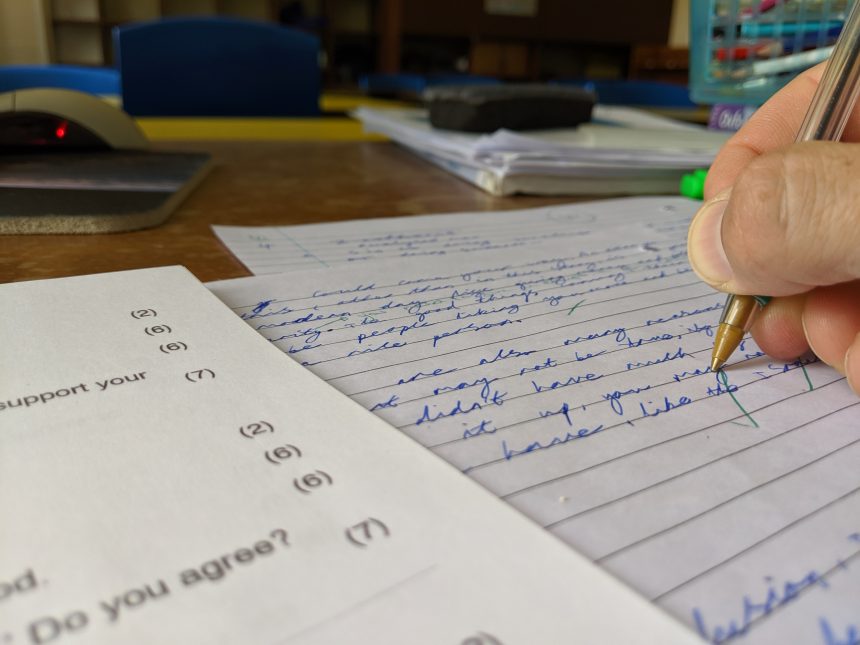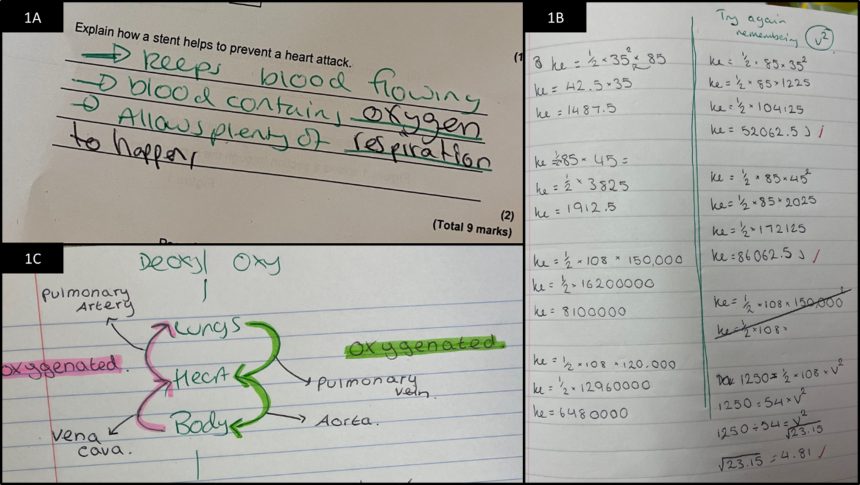The quality, format, and quantity of feedback given to students, by teachers, is a topic of considerable debate in teaching, and every marking policy will prescribe different colours, codes, and levels of consistency. Here I seek to present the approach to live marking taken at a school in South Yorkshire, which has sought to increase the quality of both feedback, and students’ responses to feedback, whilst also facilitating vital learning conversations in the classroom, and reducing teacher workload: the ‘You take over’ strategy.
I feel it’s uncontroversial to say that within a classroom, the interactions between students and their teachers are amongst the most powerful drivers of student progress and engagement. It is, however, a consequence of the social nature of these interactions that they are often fleeting, and often forgotten or − more dangerously − misremembered. Despite this, circulation and conversation are mainstays in every teacher’s approach to classroom management, assessment for learning, and building and maintaining positive relationships. Often, traditional approaches to marking (books taken home, in a pile on the sofa, ploughed through one at a time) lose the interactive nature of student-teacher feedback, and thus, a considerable proportion of their impact.

In order to address this issue, I want to propose here that live marking (circulating the class with a green pen in hand, annotating, scaffolding and smiley-facing over students’ work), following the ‘You take over’ strategy, presents an alternative approach to marking.
This approach provides teachers with a powerful opportunity to scaffold and support students, and those students with an immediate record of the valuable interactions with their teacher, to which they can return if they encounter difficulties in the future. Additionally, student voice demonstrated that students in a department for which live marking and feedback became a point of focus, reported significant gains in their belief that their teacher understood, cared about, and crucially drove their progress forward.
How does the ‘You take over’ strategy work?
At first sight, this approach is fantastically simple. Whilst the implementation of it into practice requires a little more deliberate thought and reflection than may be anticipated, these efforts are quickly paid off in kind.
In essence, ‘You take over’ marking, is the process of identifying students who are struggling to complete the task in hand, or who have made a small mistake in their work. The students’ work is annotated to highlight areas of strength and misconception, before providing a clear and actionable next step to enable them to complete the task. This may be in the form of a sentence starter (fig. 1A), the highlighting of a small error and a direction as to how to avoid it (fig. 1B), or the starting of the task for the student/drawing an accompanying diagram (fig. 1C). This removes the ‘fear of the blank page’ which all teachers will know well. Depending on the length of the students’ directed task, immediately, or after a few minutes, the teacher is able to check the work, and see if the misconception has been addressed adequately (and thus praise the student), or direct the student to further work needed to enable them to make progress.

Figure 1: Examples of ‘You take over’ marking
The examples above, I hope, demonstrate that the ‘You take over’ approach can provide an effective tool to develop students’ academic progress, and additionally, show that it is easily adaptable to the needs and prior attainment of the student (I don’t like the word ability!). This drives student progress without any significant investment or additional planning on the teacher’s part. As well as driving academic progress, my colleagues and I have found that the ‘You take over’ approach has not only significantly improved our understanding of our students’ progress, allowing a greater degree of adaptive teaching, but also our relationships with students. This was corroborated by students in a recent student voice session, who unanimously felt that their teachers now had a much improved awareness of their progress, and crucially, felt more confident that their teachers had a genuine engagement and investment in their development as individuals and learners.
I hope that this short article demonstrates the value in live marking as part of circulation, and the value of annotation and the informal documentation of these conversations in students’ work to serve as a scaffold and support for students across the ability range. If you wish to discuss this further with me, or have any examples of when you have used this, please don’t hesitate to tweet me (@rubbiology).







Comments